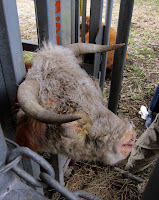http://lplatefarmer.blogspot.com.au/
 The new millennium began 13 years ago, remember the Y2K bug, we survived that and powered on to MacBooks and flat panels, we queued up for iphones 3, 4 and 5 then we powered on through 3G to 4G ... do we have 5G yet and did you know there was a 1G system way back in 1981. When terabytes of storage are not enough we supersize up to petabytes. Did you know you can now have a Yottabyte or even a Brontobyte of disc storage. I wish my cupboards could virtually expand like that, then again maybe not!
The new millennium began 13 years ago, remember the Y2K bug, we survived that and powered on to MacBooks and flat panels, we queued up for iphones 3, 4 and 5 then we powered on through 3G to 4G ... do we have 5G yet and did you know there was a 1G system way back in 1981. When terabytes of storage are not enough we supersize up to petabytes. Did you know you can now have a Yottabyte or even a Brontobyte of disc storage. I wish my cupboards could virtually expand like that, then again maybe not!Well all of that became irrelevant to us down on the farm because a single bar of 3G mobile coverage was a thing to wildly celebrate. Not that it did much, one bar allows the occasional email or text message to slip in and none to go out. In fact living in an area of virtually zero coverage messes with the mobile phone's head, when we finally rejoin the world again- that is, drive down the road a few kms, it refuses to work and then the little ceremony of switching to airplane mode and off again seems to appease it. Airplane mode in the middle of the bush! - I know --well it just works -- some of the time.
Not any more- because we recently catapulted directly into the 21st century. Our roof now sprouts
an 1.2 m NBN satellite dish for the internet & phone
a mobile phone network antenna
a mobile coverage booster
a TV antenna
a cable TV dish
and did I mention the solar PV panels for electricity
plus the solar hot water system
there is no room for a cat on our hot tin roof.
Some of this costs money of course - but not the NBN satellite dish. Here is a little secret, the government will actually give you a FREE NBN satellite dish if and here is the catch- if you really cannot access the internet where you live. That is, no ADSL, no fibre, no 3G, no nothing.
We don't live out in the back of beyond, we live 1 hour 40 mins from both Sydney and Canberra, right on one of the busiest communications corridors in the country. What we have that many haven't are a few big hills around us that happen to be strategically placed so they block out the 21st century.
Some might sigh and say 'how blissful - good bye world'
but farmers need weather forecasts, weather radar, bush fire info, to pay bills ( not many banks around anymore) and to contact family, check Facebook and Instagram and of course Google useful and time wasting stuff just like our neighbours over the hill.
 |
| the cable ties are a hi tech way of keeping the birds off! |
free electricity
free hot water
from our free dish we get 20 GB of data for around $40 a month
So far the TV is the only piece of technology not getting used- we're too tired at night and anyhow the internet allows the digital paper to arrive in bed every morning - our front fence is way too far away and no unravelling the plastic wrapper, movies, music and every other app are all there on demand-
just click!
























